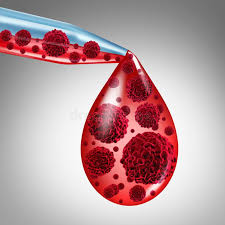


MBBS, MD, DM
Bone Marrow Transplant Specialist,
Hemato-Oncologist, Hematologist,
Fortis Memorial Research Institute
23 Years of Experience
Dr. Rahul Bhargava is a highly respected hematologist with over 23 years of experience in the field of hematology. He has completed more than 1,500 stem cell transplants to date.
Between 2011 and 2013, Dr. Bhargava pioneered the establishment of the first stem cell transplant center at Medanta The Medicity in Gurgaon. He became the first Indian doctor in 2016 to perform and popularize stem cell transplants for multiple sclerosis.
Dr. Bhargava has played a significant role in setting up ten low-cost centers across India, including locations at Batra Hospital, Sarvodaya Hospital, and Action Balaji Hospital, among others. Driven by his vision of anemia- and thalassemia-free India, he actively partners with various government initiatives to offer affordable bone marrow transplant (BMT) treatments to a broader population.
Dr. Bhargava completed his MBBS from Barkatullah University, Bhopal, in 2001, followed by an MD in Medicine from the same institution in 2004. He later earned a DM in Clinical Hematology in 2009 from AIIMS, New Delhi.
In 2018, he took a proactive approach to community hematology by screening over 500 children in schools across Haryana and nearby areas. Furthermore, Dr. Bhargava has participated in over 1,000 Continuing Medical Education (CME) programs, further enhancing his expertise.
Dr. Bhargava is widely regarded as one of the top hematologists in Delhi and Gurgaon due to his unwavering commitment to raising awareness about various blood disorders in the community. He is also an active member of the Delhi Hematology Society.
Our patients' ratings on Google reflect our dedication and commitment to providing high-quality service.
Our successful patients are a testament to the effectiveness of our care and the quality of our services.
With a vision of anaemia-free and thalassemia-free India, Dr. Rahul Bhargava actively collaborates with various government initiatives to provide low-cost BMT treatment to the masses. His longstanding vision of the first integrated centre of excellence in Haematology, paediatric haematology, and stem cell transplant has been fulfilled at Fortis Memorial Research Institute.
In 2016, Dr. Rahul Bhargava became the first Indian doctor to popularize stem cell transplant in multiple sclerosis. Due to his vast experience in this field, Dr. Bhargava is considered one of the best stem cell transplant experts in Delhi and Gurgaon.

Chimeric antigen receptor (CAR) T-cell therapy is a type of immunotherapy that uses a patient’s T cells to treat certain blood cancers

A bone marrow transplant (BMT) is a procedure that replaces unhealthy blood-forming cells in the bone marrow with healthy ones

Bleeding disorders are a group of conditions that result when the blood cannot clot properly

Blood cancer refers to cancers affecting the blood, bone marrow, or lymphatic system, and may grow rapidly or slowly based on the type.
Guide to Health and Wellness